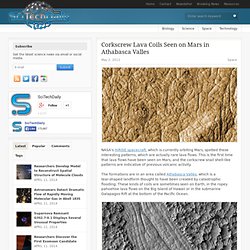

Nasa's Orion onboard cameras capture images as it makes landing in Pacific Ocean. Orion re-entered the atmosphere at 20,000 mph (32,000 kph) enduring temperatures of 2,200°C (4,000°F)It splashed down at target point 275 miles (442 km) west of Baja, California while travelling at 20mph (32km/h)Nasa's Orion spacecraft is designed to carry astronauts to an asteroid and eventually to Mars in the 2030sIt launched at 12.05 GMT (07.05 ET) today on a 4.5 hours journey that saw it travel twice around the Earth Orion reached an altitude of 3,600 miles (5,800 km) - 15 times the distance to the International Space StationIt also travelled through Earth's Van Allen radiation belts that protect the planet from highly-charged particlesData from this will show how well equipment tolerates radiation at the levels experienced on a journey to Mars Lift-off was aborted yesterday due to a rogue boat straying into waters, high winds and a valve problemIn future, it will be used with world's most powerful rocket, the Space Launch System, to take people to deep space Scroll down for videos.

Mystery of Mars's organic carbon deepens - meteorites from Red Planet DID carry building blocks of life. Winter's over (for Rover): Nasa's Mars probe 'wakes up' after hibernating through dark months on Martian surface. 12-foot drive after solar panels charge up Rover has 'wintered' in the same spot for 19 weeksEighth year of mission to Mars - supposed to last three months By Rob Waugh Published: 10:37 GMT, 10 May 2012 | Updated: 10:37 GMT, 10 May 2012 It was definitely one small step for robotkind - the Mars Opportunity Rover drove just 12 feet on May 8 - but it's a sign that the robot is still going, eight years into a mission that was meant to last just three months.

Opportunity had spent 19 weeks stuck in one place to 'weather out' the dark months of the Martian winter on an outcrop called Greeley Haven. This week, the solar power rose enough for it to drive again. A view captured by Opportunity before starting its first drive of 2012. Forward view from Opportunity this week: Opportunity has worked through four Martian southern hemisphere winters since it landed in in January 2004 about 14 miles northwest of its current location Both rovers continued for years of bonus, extended missions. Corkscrew Lava Coils Seen on Mars in Athabasca Valles. NASA’s HiRISE spacecraft, which is currently orbiting Mars, spotted these interesting patterns, which are actually rare lava flows.

This is the first time that lava flows have been seen on Mars, and the corkscrew snail shell-like patterns are indicative of previous volcanic activity. The formations are in an area called Athabasca Valles, which is a tear-shaped landform thought to have been created by catastrophic flooding. These kinds of coils are sometimes seen on Earth, in the ropey pahoehoe lava flows on the Big Island of Hawaii or in the submarine Galapagos Rift at the bottom of the Pacific Ocean. The Martian lava coils are about 100 feet across, much larger than the ones found on Earth, which are only about a foot in size.
These coils are formed when two lava flows move past each other at different speeds. The research was published in the journal Science. Ryan has found nearly 200 lava coils in the Cerberus Palus region, and believes that there are more. [via Wired] A hole in Mars: Nasa orbiter accidentally photographs open crater leading into underground cavern on surface of Red Planet. Hole was discovered by chance on images of dusty slopes of Pavonis Mons volcanoImage taken by HiRISE instrument aboard robotic Mars Reconnaissance Orbiter By Daily Mail Reporter Published: 07:51 GMT, 19 July 2012 | Updated: 11:17 GMT, 19 July 2012 Nasa scientists are baffled as to what - or maybe even who?
Watch out, Curiosity: Scientists discover massive plates under the surface of Mars. Could give clues to the early development of EarthFirst time tectonic activity has been seen on another planetResponsible for rift 2,500 miles long - nine times bigger than the Grand Canyon By Mark Prigg Published: 14:54 GMT, 10 August 2012 | Updated: 15:06 GMT, 10 August 2012 The first evidence of massive plates under the surface of Mars has been discovered.

The breakthrough is the first time that tectonic plates, previously only seen on Earth, have been found on another planet. Scientists had previously been unsure whether the phenomenon, which causes earthquakes on earth, occurred elsewhere in the solar system. California researchers have found the first evidence of tectonic activity on Mars, caused by giant plates under the planet's surface moving around Now, a UCLA scientist has discovered that the geological phenomenon, which involves the movement of huge crustal plates beneath a planet's surface, also exists on Mars. DiscoverMagazine.com. Well now, this is an interesting discovery: astronomers have found what looks like a "super-Earth" – a planet more massive than Earth but still smaller than a gas giant – orbiting a nearby star at the right distance to have liquid water on it!

Given that, it might – might – be Earthlike. This is pretty cool news. We’ve found planets like this before, but not very many! And it gets niftier: the planet has at least five siblings, all of which orbit its star closer than it does. Now let me be clear: this is a planet candidate; it has not yet been confirmed. The star is called HD 40307, and it’s a bit over 40 light years away (pretty close in galactic standards, but I wouldn’t want to walk there). Massive planets tug on their star harder, so they’re easier to find this way. In this case, HD 40307 was originally observed a little while back by HARPS, and three planets were found.
We don’t know how big the planet is, unfortunately. The Martian 'island of silver' in stunning detail - complete with mountain peaks topped with carbon dioxide frost. Incredible images captured by the European Space Agency Mars Express craftReveal the majesty of the Martian area first named in 1877 by Italian astronomer Giovanni Schiaparelli.

Winter on Mars: The amazing images of ice peaked craters on the red planet. By Mark Prigg Published: 15:34 GMT, 24 December 2012 | Updated: 15:34 GMT, 24 December 2012 With frost-tipped craters and a winter-like feel, it seems Christmas has come to the red planet.

Eclipse of Mars' moons: Curiosity rover captures satellites crossing paths from the red planet's surface for the first time. Nasa's Jet Propulsion Laboratory said the larger of the two moons, Phobos, passed in front of Deimos on 1 AugustScientists created a video of the event by stitchng together 41 images taken by the Curiosity rover on MarsFirst time the Martian moon eclipse has been captured from the red planet.
